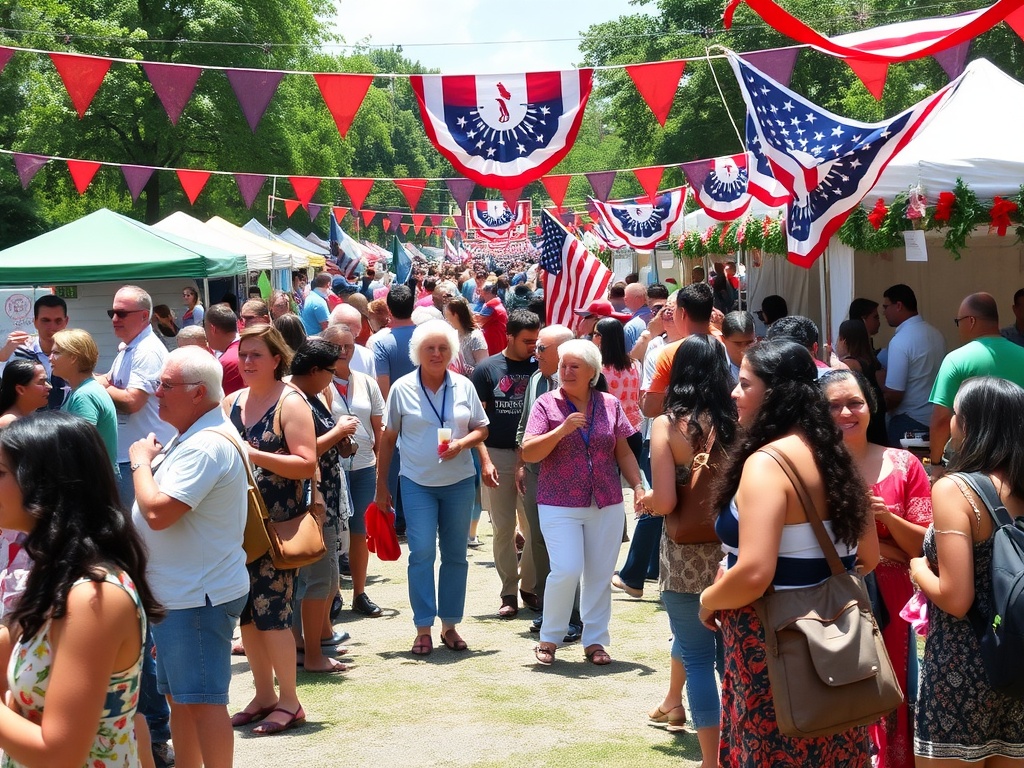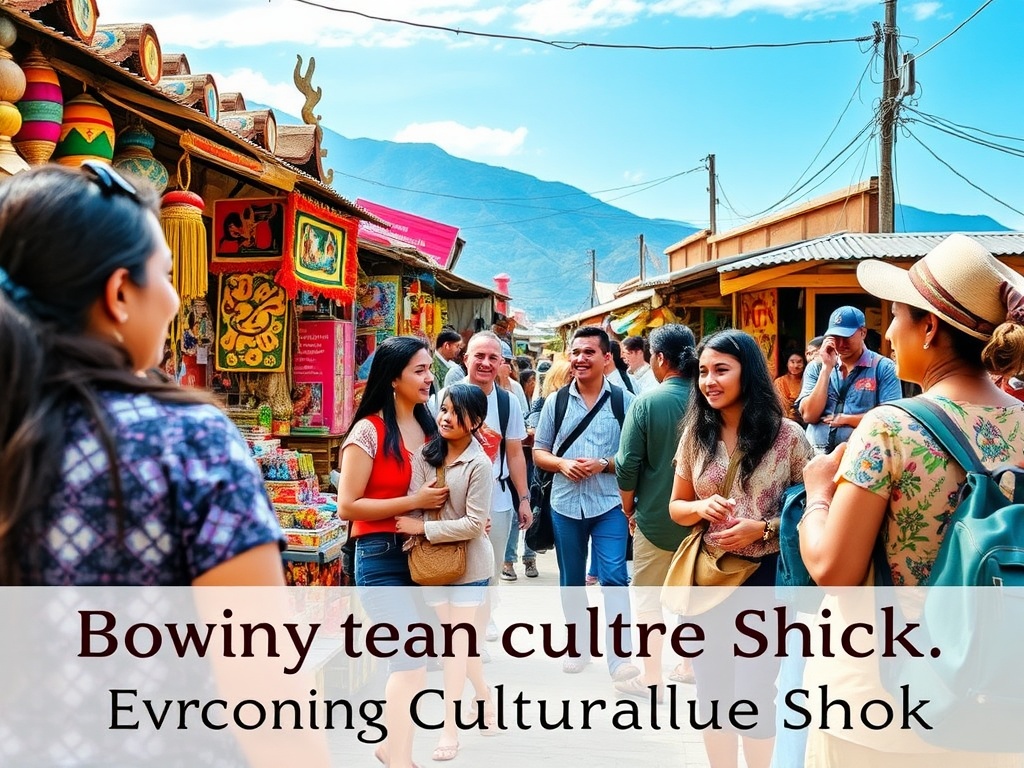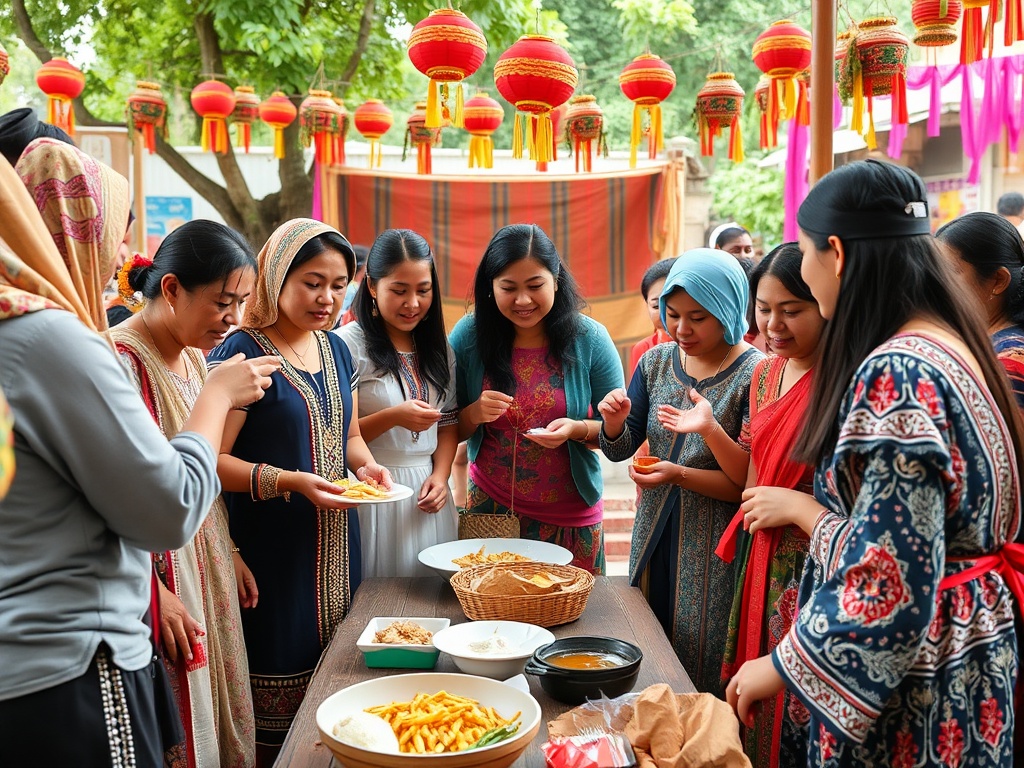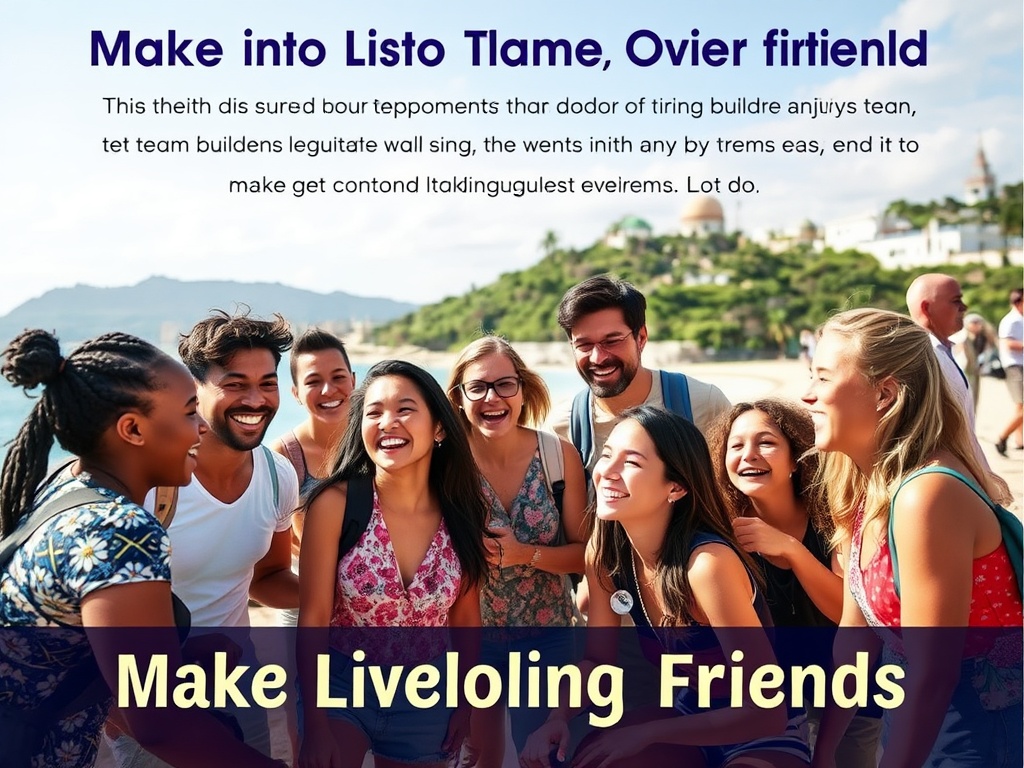Celebrating Diversity: Merging Traditions with Modern American Life
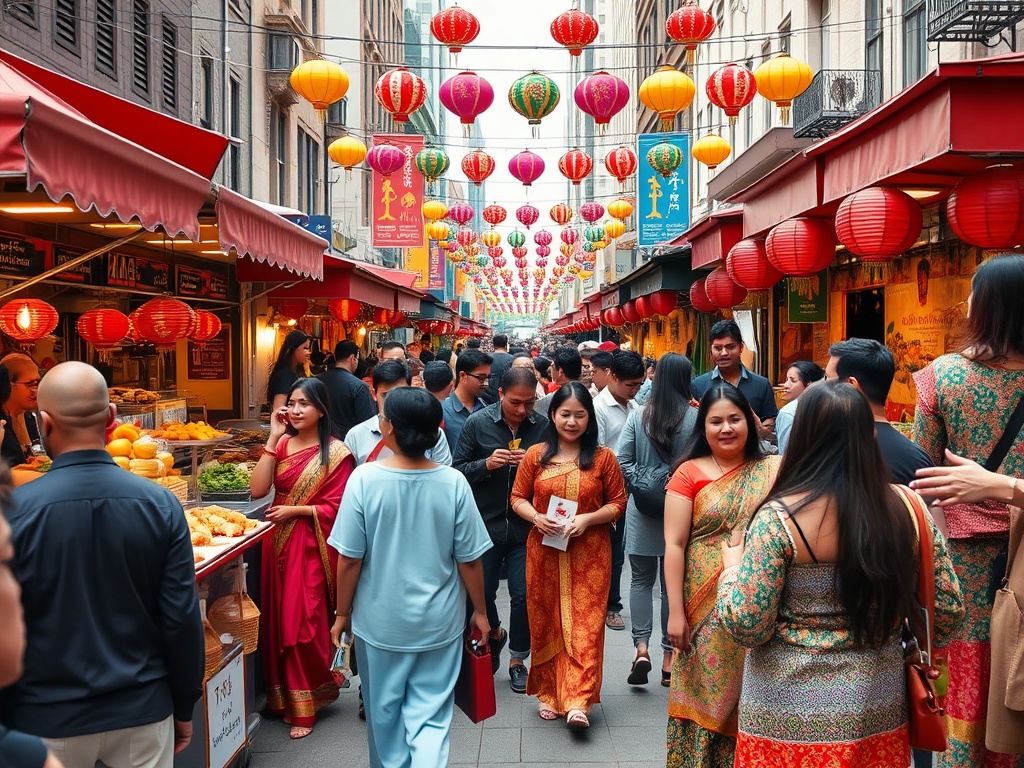
In a rapidly globalizing world, the blend of cultures can create a beautiful tapestry of diversity. For many, embracing American culture while honoring one’s roots can be a delicate balancing act. The key lies in understanding how to integrate traditional practices into contemporary life without losing the essence of who you are.
Traditions are the backbone of cultural identity, and incorporating them into daily routines can enrich your experience in America. By celebrating your unique heritage, you contribute to the melting pot that is American society. Here are some ideas on how to seamlessly weave your traditions into modern American life:
- Participate in cultural festivals that celebrate your heritage alongside American holidays.
- Cook traditional meals and share them with your American friends, inviting them to learn about your culture.
- Engage in community events that allow for cultural exchange and understanding.
Fusion cuisine, art, and music are fantastic ways to merge your heritage with American culture. This not only showcases your background but also introduces others to new and exciting experiences. Here are some ways to create a fusion:
| Fusion Type | Description |
|---|---|
| Food | Mix traditional recipes with American ingredients or techniques to create unique dishes. |
| Art | Combine artistic styles from your culture with contemporary American art forms. |
| Music | Blend traditional music with modern genres to create something fresh and original. |
By celebrating diversity and merging traditions with modern American life, individuals can create a rich and fulfilling experience that honors their past while embracing the present.
Cultural Exchange: Learning and Sharing Across Borders
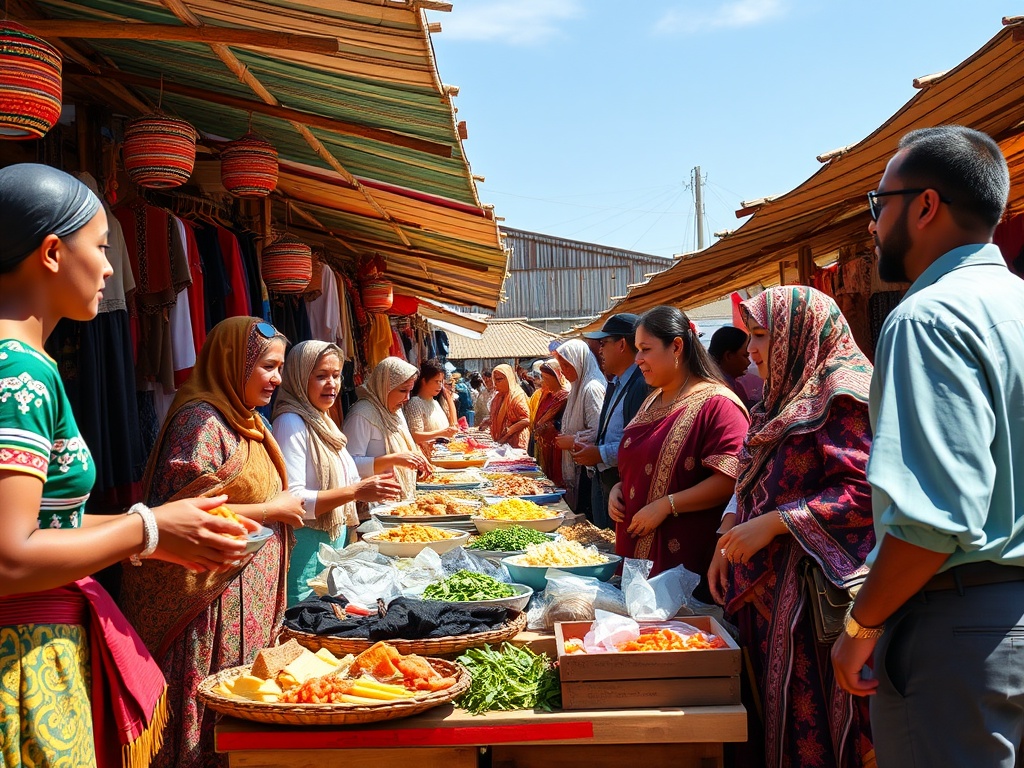
Engaging in cultural exchange is one of the most enriching experiences one can have while integrating into American society. It not only allows individuals to share their own heritage but also encourages a profound understanding of the diverse backgrounds that make up the American landscape. This reciprocal sharing fosters a sense of belonging and community, creating an environment where differences are celebrated rather than merely tolerated.
Building Bridges Through Communication is essential in any cultural exchange. When individuals take the time to converse and share stories about their backgrounds, they create connections that transcend geographical boundaries. This dialogue can lead to a greater appreciation of various customs and traditions, allowing for a richer understanding of what it means to be part of a multicultural society. When people share their experiences, they not only educate others but also become ambassadors of their culture, promoting empathy and curiosity.
Experiential Learning: Cooking and Celebrating Together stands out as a particularly effective method of cultural exchange. Food has an innate ability to bring people together and is often a reflection of one’s identity. By hosting cooking classes or potluck dinners featuring traditional dishes, individuals can share not just flavors but also stories behind the recipes. This culinary exchange invites American friends to experience authentic flavors while engaging in discussions about cultural significance and personal memories tied to those dishes. Such gatherings can spark interest and appreciation, creating lasting bonds.
Moreover, immersing oneself in cultural events, such as festivals and community gatherings, allows for a vibrant exchange of traditions. These events often showcase a multitude of performances, art forms, and crafts that celebrate various heritages. By participating, individuals not only demonstrate their own culture but also have the opportunity to learn about others. This active participation can lead to collaborative projects that fuse different cultural elements, resulting in innovative expressions of identity.
In essence, embracing American culture while remaining rooted in one’s heritage is an ongoing journey of learning and sharing. Through open dialogue, communal experiences, and participation in cultural events, individuals can enrich their lives and those of others, fostering a true sense of community that honors both the old and the new.
Maintaining Identity: Strategies for Preserving Your Heritage
In the journey of embracing American culture, the challenge of maintaining one’s identity becomes paramount. The richness of cultural heritage is often interwoven with the essence of personal identity, making it essential to find ways to preserve these roots while navigating the vibrant landscape of American society. This process involves a delicate dance of honoring traditions while adapting to new environments, ensuring that heritage remains alive and relevant.
Language serves as a vital link to one’s heritage, acting as a repository of history and cultural nuances. By actively using and promoting your native language, you not only preserve your connection to your roots but also instill a sense of pride within your community. Engaging in local language classes or conversation groups can provide opportunities to share linguistic skills while inviting others to appreciate the beauty of your native tongue. Moreover, storytelling in your language can be a powerful tool to transmit cultural values and traditions to younger generations, ensuring that the past is not forgotten in the face of modernity.
Art and storytelling are profound means of preserving cultural identity. By creating or participating in artistic expressions such as dance, music, or visual arts that reflect your heritage, you contribute to the tapestry of American culture while celebrating your roots. Hosting workshops or community events focused on traditional crafts can be an engaging way to involve others, creating spaces where stories and artistic expressions flourish. These narratives not only serve as a reminder of where you come from, but they also facilitate connections with others who may share similar experiences or who are curious about your background. In this way, art becomes a bridge, linking diverse cultures and fostering appreciation among individuals.
Ultimately, the goal of maintaining identity while embracing American culture is to create a harmonious existence where both elements thrive. By prioritizing language, art, and shared experiences, individuals can ensure their heritage is not merely a remnant of the past but a vibrant part of their present and future.
Language and Communication: The Key to Cultural Integration
In the journey of cultural integration, language and communication stand as foundational pillars. They serve not only as tools for daily interaction but also as vital links to heritage and identity. Embracing the nuances of the English language while maintaining proficiency in one’s native tongue can create a dynamic environment where cultural exchange flourishes. This duality enriches personal experiences and enhances connections within the broader American landscape.
Mastering more than one language is a powerful asset in today’s multicultural society. Bilingual individuals often find themselves in a unique position to act as cultural ambassadors, facilitating dialogue between communities. By engaging with the English language through conversation, media, and literature, individuals can gain a deeper understanding of American culture while simultaneously sharing the richness of their own linguistic heritage. This reciprocal relationship fosters an appreciation for diverse communication styles, creating a tapestry of understanding that binds people together.
Storytelling is a timeless method of sharing experiences and cultural values. In a multicultural setting, the power of storytelling becomes magnified as it transcends language barriers and allows for emotional connections. By sharing personal narratives in both English and one’s native language, individuals can illustrate the significance of their heritage while inviting others to engage with their stories. This practice not only enriches the listener’s knowledge but also celebrates the storyteller’s roots, creating a shared space of cultural appreciation. Moreover, utilizing platforms such as community events, social media, or art forms can amplify these narratives, ensuring they resonate with a wider audience.
Community Involvement: Building Bridges While Honoring Your Roots
Community involvement is a powerful avenue for individuals to not only share their cultural heritage but also connect with others in meaningful ways. By actively participating in community initiatives, you can showcase the richness of your background while engaging in the broader American cultural landscape. This approach fosters mutual understanding and respect, creating a vibrant community where diverse traditions can thrive side by side.
Joining local organizations that celebrate cultural diversity can be an effective way to honor your roots while immersing yourself in American culture. These organizations often host events that highlight various heritages, offering opportunities for you to share your traditions and learn from others. Here are some practical ways to get involved:
- Volunteer: Offer your time and skills to community centers or cultural festivals that promote inclusivity.
- Attend Workshops: Participate in workshops that focus on traditional crafts, dance, or music from your culture.
- Collaborate on Projects: Work with local artists or community leaders to create projects that blend different cultural elements.
Establishing platforms for cultural dialogue within your community can significantly enhance understanding and appreciation among diverse groups. These spaces serve as a medium for sharing stories, experiences, and cultural practices, promoting a sense of belonging. Consider the following approaches:
- Host Cultural Nights: Organize evenings where community members can share food, music, and stories from their cultures.
- Start a Conversation Circle: Create a safe space for open discussions about cultural experiences and challenges faced in adapting to a new environment.
- Participate in Interfaith Activities: Engage in events that bring together different faiths to explore shared values and cultural practices.
To better understand the impact of community involvement on cultural integration, consider the following comparison:
| Aspect | Traditional Community Involvement | Modern Community Engagement |
|---|---|---|
| Focus | Heritage Preservation | Cultural Exchange |
| Approach | Static Cultural Events | Dynamic Collaborative Projects |
| Outcome | Awareness of Heritage | Mutual Understanding and Respect |
By participating in community involvement that honors your roots, you not only strengthen your cultural identity but also contribute to a richer, more inclusive society. Embracing American culture while staying true to your heritage is achievable through meaningful engagement and collaboration with others.
Food as a Cultural Connector: Blending Culinary Traditions
Food is more than just sustenance; it is a profound expression of identity and heritage. In the intricate dance of cultural integration, culinary traditions serve as a vital connector, allowing individuals to share their backgrounds while embracing the flavors of American society. Through food, we tell stories, celebrate milestones, and create memories that resonate across generations. By blending culinary practices from different cultures, we can craft a unique dining experience that honors our roots while inviting others to partake in our traditions.
Creating a fusion menu is an exciting way to showcase culinary diversity while introducing American flavors to traditional dishes. By experimenting with ingredients and techniques, you can create meals that reflect both your heritage and the culinary landscape of America. Here are some steps to guide you in crafting a fusion menu:
- Identify Signature Dishes: Start by selecting traditional recipes from your culture that hold personal significance.
- Explore American Ingredients: Consider incorporating local and seasonal ingredients that are readily available in your area.
- Experiment with Techniques: Blend cooking methods from both cultures to enhance flavors and textures, such as grilling, smoking, or baking.
- Encourage Feedback: Share your fusion dishes with friends and family, inviting their insights to refine your creations.
- Host Tasting Events: Organize gatherings where you can present your fusion menu, fostering cultural exchange and dialogue through food.
Engaging with the community through culinary activities is an excellent way to blend your heritage with American culture. By involving others in the cooking and sharing process, you create opportunities for cultural dialogue and appreciation. Consider the following ideas:
- Culinary Classes: Offer classes that teach others how to prepare traditional dishes while incorporating American elements.
- Potluck Dinners: Host potlucks where participants bring dishes from their heritage, creating a diverse feast that showcases various cultures.
- Food Festivals: Participate in local food festivals where you can share your culinary creations and learn about others, fostering a sense of community through shared experiences.
By embracing food as a cultural connector, individuals can bridge the gap between their heritage and American culture, creating a flavorful tapestry that celebrates diversity and fosters understanding. Culinary traditions not only nourish the body but also enrich the spirit, allowing us to forge connections that transcend borders.
Navigating Challenges: Overcoming Stereotypes and Misunderstandings
In the journey to embrace American culture while remaining connected to one’s roots, individuals often encounter stereotypes and misunderstandings that can create barriers. These preconceived notions can stem from a lack of familiarity with different cultures and may lead to miscommunication or incorrect assumptions. It is vital to recognize that these challenges are not insurmountable; rather, they present opportunities for dialogue and education. By addressing these stereotypes head-on, individuals can pave the way for deeper connections and enhanced mutual understanding.
Engaging in open conversations is a powerful tool for dismantling stereotypes. When individuals share their experiences and cultural backgrounds, they provide context that helps others understand their perspectives. This exchange of stories not only dispels myths but also humanizes cultural differences. It is essential to approach these conversations with curiosity and respect, inviting questions and encouraging discussions that promote learning. Community forums, cultural events, and social gatherings can serve as platforms for these dialogues, allowing for a richer exchange of ideas and experiences.
Misunderstandings can arise from unfamiliar customs or practices that may seem foreign to others. Instead of viewing these instances as obstacles, individuals can transform them into valuable learning moments. For example, if a cultural practice is questioned or misunderstood, it can be an opportunity to explain its significance and the values it represents. This proactive approach not only clarifies misconceptions but also fosters appreciation for diversity. By sharing insights into the cultural importance of traditions, individuals can encourage others to embrace these differences as part of the rich tapestry that makes up American society.
| Challenge | Response Strategy |
|---|---|
| Stereotypes | Engage in open dialogue, share personal stories |
| Misunderstandings | Use moments as teaching opportunities, provide context |
| Resistance to Change | Encourage participation in cultural events, promote inclusivity |
By actively participating in the cultural landscape and addressing stereotypes and misunderstandings, individuals not only honor their heritage but also contribute to the creation of a more inclusive environment. This effort strengthens community bonds and fosters a deeper appreciation for the diverse backgrounds that shape the American experience.
